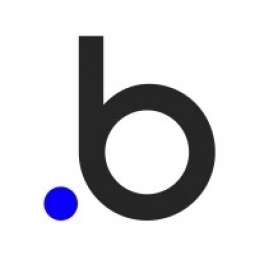技术
- 平台即服务 (PaaS) - 应用开发平台
适用行业
- 水泥
- 教育
用例
- 楼宇自动化与控制
服务
- 培训
关于客户
Kreatus 专为希望将热情和经验转化为可持续职业的内容创作者而设计。它为创作者提供了一个与粉丝互动、提供指导和咨询服务以及管理和交付订单的平台。该应用程序对于希望增加与粉丝的互动并同时产生额外收入的创作者特别有利。该应用程序已向少数客户推出,包括视频游戏教练和主播,并计划进一步扩展。
挑战
Kreatus 是一款旨在为内容创作者提供支持的应用程序,当其全栈开发人员不得不暂时离开团队时,它面临着重大挑战。该应用程序的创始人 Hyunghwan Byun 是 Adobe 的一名用户体验设计师,他的任务是在没有必要的编码技能的情况下构建该产品。我们面临的挑战是创建一个平台,让内容创作者能够将他们的热情和经验转化为可持续的收入来源。该平台将使创作者能够指导他们的粉丝,提供咨询等服务,以及管理和交付订单,同时增加与观众的互动。
解决方案
该解决方案以 Bubble 的形式出现,这是一个无代码平台,允许 Hyunghwan 无需编写任何代码即可构建功能齐全的 Web 应用程序。尽管学习过程很困难,但 Bubble 强大的点击式网页编辑器和云托管平台使 Hyunghwan 能够按照他的设想构建产品。通过 Bubble,他能够为内容创作者创建一个辅导页面,列出要提供的服务,与各个平台上的粉丝共享页面链接,以及管理和交付订单。该平台还允许引入游戏化元素,使用户的教练体验更加愉快。
运营影响
数量效益

Case Study missing?
Start adding your own!
Register with your work email and create a new case study profile for your business.
相关案例.

Case Study
System 800xA at Indian Cement Plants
Chettinad Cement recognized that further efficiencies could be achieved in its cement manufacturing process. It looked to investing in comprehensive operational and control technologies to manage and derive productivity and energy efficiency gains from the assets on Line 2, their second plant in India.

Case Study
IoT platform Enables Safety Solutions for U.S. School Districts
Designed to alert drivers when schoolchildren are present, especially in low-visibility conditions, school-zone flasher signals are typically updated manually at each school. The switching is based on the school calendar and manually changed when an unexpected early dismissal occurs, as in the case of a weather-event altering the normal schedule. The process to reprogram the flashers requires a significant effort by school district personnel to implement due to the large number of warning flashers installed across an entire school district.

Case Study
Digital Transformation of Atlanta Grout & Tile: An IoT Case Study
Atlanta Grout & Tile, a Tile, Stone & Grout restoration company based in Woodstock, Georgia, was facing challenges with its traditional business model. Despite steady growth over the years, the company was falling behind the web revolution and missing out on the opportunity to tap into a new consumer base. They were using independent software from different vendors for each of their department information and workforce management. This resulted in a lot of manual work on excel and the need to export/import data between different systems. This not only increased overhead costs but also slowed down their response to clients. The company also had to prepare numerous reports manually and lacked access to customer trends for effective business decision-making.

Case Study
Revolutionizing Medical Training in India: GSL Smart Lab and the LAP Mentor
The GSL SMART Lab, a collective effort of the GSL College of Medicine and the GSL College of Nursing and Health Science, was facing a challenge in providing superior training to healthcare professionals. As clinical medicine was becoming more focused on patient safety and quality of care, the need for medical simulation to bridge the educational gap between the classroom and the clinical environment was becoming increasingly apparent. Dr. Sandeep Ganni, the director of the GSL SMART Lab, envisioned a world-class surgical and medical training center where physicians and healthcare professionals could learn skills through simulation training. He was looking for different simulators for different specialties to provide both basic and advanced simulation training. For laparoscopic surgery, he was interested in a high fidelity simulator that could provide basic surgical and suturing skills training for international accreditation as well as specific hands-on training in complex laparoscopic procedures for practicing physicians in India.

Case Study
Implementing Robotic Surgery Training Simulator for Enhanced Surgical Proficiency
Fundacio Puigvert, a leading European medical center specializing in Urology, Nephrology, and Andrology, faced a significant challenge in training its surgical residents. The institution recognized the need for a more standardized and comprehensive training curriculum, particularly in the area of robotic surgery. The challenge was underscored by two independent studies showing that less than 5% of residents in Italian and German residency programs could perform major or complex procedures by the end of their residency. The institution sought to establish a virtual reality simulation lab that would include endourological, laparoscopic, and robotic platforms. However, they needed a simulator that could replicate both the hardware and software of the robotic Da Vinci console used in the operating room, without being connected to the actual physical console. They also required a system that could provide both basic and advanced simulation training, and a metrics system to assess the proficiency of the trainees before they performed surgical procedures in the operating theater.




